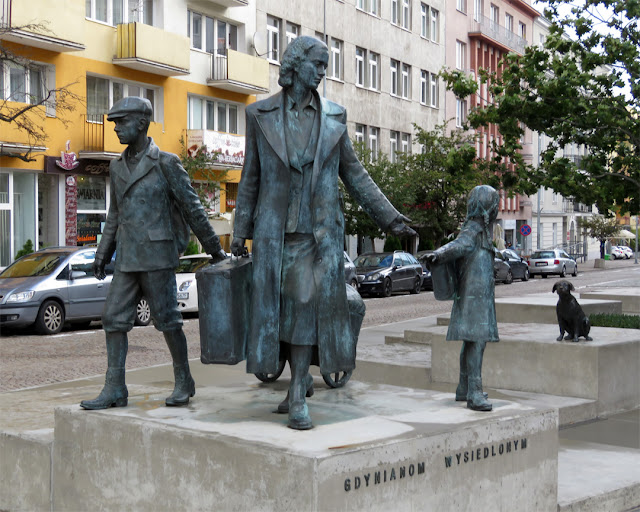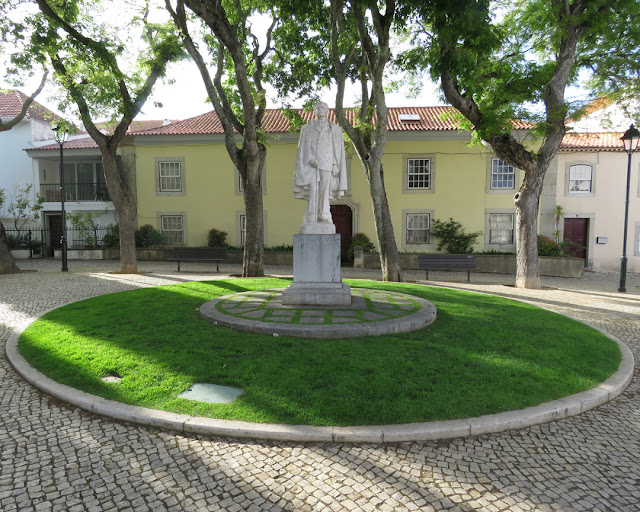Thursday, December 31, 2020
Three buildings
The Benjamin Hotel, 1927 - East 50th Street at Lexington Avenue
599 Lexington Avenue by Edward Larrabee Barnes/John MY Lee Architects, 1986
Citigroup Center by Hugh Stubbins, 1977 - East 53rd Street
New York, September 2007
Wednesday, December 30, 2020
Pierre Lachambeaudie
Grave of Pierre Lachambeaudie (1806–1872)
Cimetière du Père-Lachaise, (Père Lachaise Cemetery)
Quartier du Père-Lachaise, 20th arrondissement
Paris, July 2014
“Pierre Casimir Hyppolyte Lachambeaudie (16 December 1806 – 7 July 1872) was a 19th-century French fabulist, poet, goguettier and chansonnier, as well as a follower of Saint-Simonianism. His fables were crowned twice by the Académie française. He is buried at cimetière du Père-Lachaise in Paris (48th division). The place Lachambeaudie in the 12th arrondissement of Paris was named after him in 1905.” (Pierre Lachambeaudie, Wikipedia)
Tuesday, December 29, 2020
Mutilati ed Invalidi di Guerra
Casa Madre dei Mutilati ed Invalidi di Guerra (House of the mutilated and invalids of war) by Marcello Piacentini, 1936
Largo dei Mutilati ed Invalidi di Guerra
Rome, June 2019
Monday, December 28, 2020
Sunday, December 27, 2020
Saturday, December 26, 2020
Friday, December 25, 2020
Thursday, December 24, 2020
Pomnik Wysiedlonych Gdynian
Pomnik Wysiedlonych Gdynian
(Monument to Displaced Gdynians) by Paweł Sasin and Adam Dziejowski, 2014
plac Gdynian Wysiedlonych
Gdynia, September 2018
Wednesday, December 23, 2020
Catherine of Siena
Catherine of Siena by Francesco Messina, 1962
Largo Giovanni XXIII
Rome, June 2019
“Catherine's letters are considered one of the great works of early Tuscan literature. Many of these were dictated, although she herself learned to write in 1377; 382 have survived. In her letters to the Pope, she often addressed him affectionately simply as Babbo (Daddy), instead of the formal form of address ‘Your Holiness’. Other correspondents include her various confessors, among them Raymond of Capua, the kings of France and Hungary, the infamous mercenary John Hawkwood, the Queen of Naples, members of the Visconti family of Milan, and numerous religious figures.” (Catherine of Siena, Wikipedia)
Tuesday, December 22, 2020
Monday, December 21, 2020
Reduta Bank Polski
Reduta Bank Polski monument to the Warsaw Uprising
ulica Bielańska
Warsaw, September 2018
“Few remnants of the Warsaw Uprising are more conspicuous than the hulking shell on ul. Bielańska 10. It’s got quite a history. The site was originally home to a mint, but that found itself demolished to make way for the Warsaw division of the Imperial Bank of Russia. Designed by Leontij Nikołajewicz Benois, a rector of the Fine Arts Academy in St. Petersburg, construction began in 1907 and went on for a further four years. Within another four years the Russian’s had left, the collapse of the Empire seeing all Tsarist subjects head back east with their tails between their legs. The Poles took over the building, first employing it as the National Treasury, then establishing it as the headquarters of Bank Polski in 1926. The structure became a key strategic target during the Warsaw Uprising, and on capture served as a base for Polish insurgents. Smashed to pieces by German bombs the building was left to rot in the decades that followed. Originally slated to house the Warsaw Uprising Museum, the old building is now used as a venue for private events.” (Reduta Bank Polski, In Your Pocket)
Sunday, December 20, 2020
Little egret
Little egret
Giardino delle vittime di via Fani
Lungarno Aldo Moro
Florence, January 2020
“The little egret (Egretta garzetta) is a species of small heron in the family Ardeidae. The genus name comes from the Provençal French Aigrette, ‘egret’, a diminutive of Aigron, ‘airone’. The species epithet garzetta is from the Italian name for this bird, garzetta or sgarzetta. It is a white bird with a slender black beak, long black legs and, in the western race, yellow feet. As an aquatic bird, it feeds in shallow water and on land, consuming a variety of small creatures. It breeds colonially, often with other species of water birds, making a platform nest of sticks in a tree, bush or reed bed. A clutch of bluish-green eggs is laid and incubated by both parents. The young fledge at about six weeks of age. Its breeding distribution is in wetlands in warm temperate to tropical parts of Europe, Africa, Asia, and Australia. A successful colonist, its range has gradually expanded north, with stable and self-sustaining populations now present in the United Kingdom.” (Little egret, Wikipedia)
Saturday, December 19, 2020
The News
Former headquarters for the New York Daily News
East 42nd Street
New York, September 2007
“The (former) headquarters for the New York Daily News, on East 42nd Street, is a 1930 skyscraper masterpiece. The enormous lobby, with its illuminated revolving globe and compass points set into the floor, is an impressive monument to wonder and the bigness of the universe, as well as a nod to the newspaper’s global perspective. Then there’s the huge facade framing the 39-story building’s main entrance. This bas relief features the newspaper name, an urban cityscape, and a crowd of people, with this inscription: ‘he made so many of them.’ What does it mean? It’s part of a quote attributed to Abraham Lincoln: ‘God must love the common people; he made so many of them.’ Sounds like an homage to the regular New Yorkers who made the Daily News, which got its start in 1919 as the city’s first tabloid, one of the nation’s biggest newspapers throughout the 20th century. At the time of the building’s opening, the News had an impressive circulation of 1.3 million. Now it’s roughly half that.” (The mystery quote on the Daily News building, Ephemeral New York)
Friday, December 18, 2020
Thursday, December 17, 2020
Faro di Roma
Faro di Roma (Roman Lighthouse or Janiculum Lighthouse) by Manfredo Manfredi, 1911
Passeggiata del Gianicolo
Rome, June 2019
“The Janiculum Lighthouse or Roman Lighthouse is a lighthouse in Rome; it was built in 1911 by Manfredo Manfredi using funds gifted to Italy by Italian expatriated in Argentina. The lamp shows the colour of Italian flag, green, white and red.” (Faro di Roma, Wikipedia)
Wednesday, December 16, 2020
Tuesday, December 15, 2020
Famille Loyer
Grave of famille Loyer
Cimetière du Père-Lachaise, (Père Lachaise Cemetery)
Quartier du Père-Lachaise, 20th arrondissement
Paris, July 2014
Monday, December 14, 2020
Hooded crow
Hooded crow
Giardino delle vittime di via Fani
Lungarno Aldo Moro
Florence, January 2020
“The hooded crow (Corvus cornix) (also called hoodie) is a Eurasian bird species in the genus Corvus. Widely distributed, it is also known locally as Scotch crow and Danish crow. In Ireland, it is called ‘caróg liath’ or grey crow, as it is in the Slavic languages and in Danish. In German, it is called ‘mist crow’ (Nebelkrähe). Found across Northern, Eastern, and Southeastern Europe, as well as parts of the Middle East, it is an ashy grey bird with black head, throat, wings, tail, and thigh feathers, as well as a black bill, eyes, and feet. Like other corvids, it is an omnivorous and opportunistic forager and feeder.” (Hooded crow, Wikipedia)
Sunday, December 13, 2020
Truck on 42nd Street
Truck blocking off street to prevent terrorism
United Nations
E 42nd Street
New York, September 2007
Saturday, December 12, 2020
Friday, December 11, 2020
Anita Garibaldi
Monument to Anita Garibaldi by Mario Rutelli, 1932
Piazzale Anita Garibaldi, Janiculum
Rome, June 2019
“The equestrian statue of Giuseppe Garibaldi's Brazilian wife Anita, who fought alongside her husband in defense of Rome in 1849 while pregnant before succumbing to illness is located just about 200 meters far from a big equestrian monument of her husband, which is located on top of Janiculum Hill in Rome. The statue was created in 1932 by Mario Rutelli. It depicts Anita Garibaldi with a pistol in her right hand holding a baby in her other hand. The monument is also Anita Garibaldi's grave as her ashes rest in the statue's pedestal.” (Anita Garibaldi, Waymarking)
Thursday, December 10, 2020
Wednesday, December 9, 2020
Tuesday, December 8, 2020
Monday, December 7, 2020
Capuchin Monastery
Capuchin Monastery, St. John the Baptist Church
West 31th Street
New York, September 2007
“The brown brick Capuchin Monastery of St. John the Baptist was built in 1974[8] in the Brutalist style. It was sold to a retail property developer in 2016.” (St. John the Baptist Church, Wikipedia)
Sunday, December 6, 2020
Polish Ballet Artists
Pomnik w Hołdzie Polskim Artystom Baletu
(Monument in Homage to Polish Ballet Artists)
Jana Moliera
Warsaw, September 2018
Saturday, December 5, 2020
Enrico and Giovanni Cairoli
Monument to Enrico and Giovanni Cairoli by Ercole Rosa, 1883
Viale della Trinità dei Monti
Rome, June 2019
“The monument was dedicated in 1883. The sculptor Ercole Rosa from the Marche region began this work when he was only 21 years old. He was later also the sculptor of the statue of Victor Emmanuel II in Piazza Duomo in Milan. The patriots brothers Enrico and Giovanni Cairoli fought in the campaign for the liberation of Rome in 1667 with other 76 volunteers. The campaign resulted in the defeat at Villa Glori when the 25-year-old Enrico Cairoli died fighting against the Swiss and German police of the pope. Giovanni Cairoli, who was two years younger than his brother, died in 1669 for the serious injuries suffered in the fight.” (Monument to the Cairoli brothers, Romapedia)
Friday, December 4, 2020
Thursday, December 3, 2020
Wednesday, December 2, 2020
Santa Maria Maddalena dei Pazzi
Santa Maria Maddalena dei Pazzi
Borgo Pinti
Florence, January 2020
“The Pazzi name was added after the Carmelite order nun Maria Maddalena de' Pazzi, canonized in 1669, whose family patronized the church. The original convent had been dedicated to St. Mary Magdalen delle Convertite, the patron of once-fallen, now converted women. The Cistercian order from Badia a Settimo took control of the site in 1332 and moved to it in 1442, while the convent was transferred to San Donato in Polverosa. However, the church and chapter house were rebuilt between 1481 and 1500, with initial designs in 1492 by Giuliano da Sangallo. The 13th-century interiors were redecorated in the 17th and early 18th centuries, which removed the altarpieces by masters such as Botticelli, Perugino, Lorenzo di Credi, Domenico Ghirlandaio, and Raffaellino del Garbo. They were replaced by new ones from minor masters such as Carlo Portelli, Alfonso Boschi, Domenico Puligo, Santi di Tito, and Francesco Curradi. In the chapter house is a fresco divided into three lunettes of the Crucifixion and Saints (1493–96) by Pietro Perugino, commissioned by Dionisio and Giovanna Pucci.” (Santa Maria Maddalena dei Pazzi, Wikipedia)
Tuesday, December 1, 2020
Pearl Street Station
Plaque at the Site of the Edison Electric Illuminating Company's 1882 Pearl Street Station
Pearl Street
Financial District, Lower Manhattan
New York, September 2007
“Pearl Street Station was the first commercial central power plant in the United States. It was located at 255–257 Pearl Street in the Financial District of Manhattan, New York City, just south of Fulton Street on a site measuring 50 by 100 feet (15 by 30 m). The station was built by the Edison Illuminating Company, under the direction of Francis Upton, hired by Thomas Edison. Pearl Street Station was fired by coal; it began with six dynamos, and it started generating electricity on September 4, 1882, serving an initial load of 400 lamps at 82 customers. By 1884, Pearl Street Station was serving 508 customers with 10,164 lamps. The station was originally powered by custom-made Porter-Allen high-speed steam engines designed to provide 175 horsepower at 700 rpm, but these proved to be unreliable with their sensitive governors. They were removed and replaced with new engines from Armington & Sims that proved to be much more suitable for Edison's dynamos. Pearl Street Station was also the world's first cogeneration plant. While the steam engines provided grid electricity, Edison made use of the thermal byproduct by providing steam heating to local manufacturers and nearby buildings on the same Manhattan block.” (Pearl Street Station, Wikipedia)
Subscribe to:
Posts (Atom)































